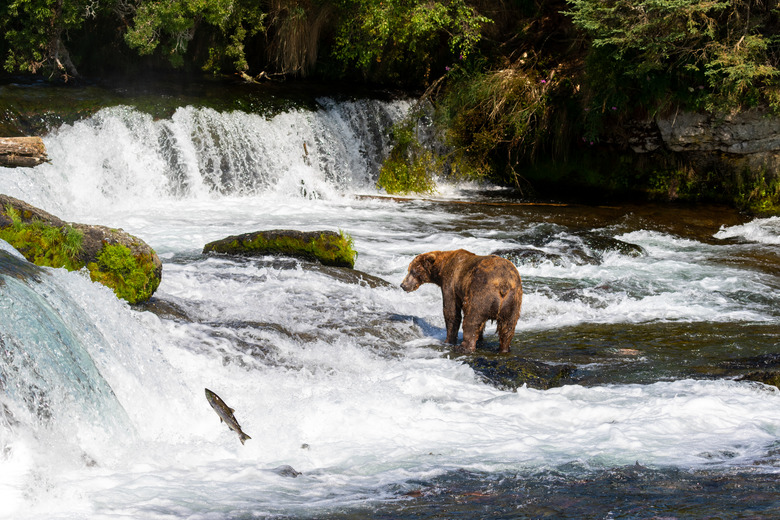How Do Grizzly Bears Move?
Food
Food
Grizzly bears are omnivorous; they are not fussy eaters and will eat plants, insects and animals. They spend most of their waking hours searching for food, and their movements are guided by this search. Food availability varies by season and the grizzly bears will vary their movements to find food sources. They feed for six to eight months of the year and hibernate for the remaining months.
Spring
Spring
Male grizzly bears emerge from hibernation a month or two prior to the females. They will roam widely during the spring months in search of food to replenish resources spent during hibernation. They roam the area looking for fresh vegetation and animals killed during the winter months. Male bears will roam widely searching for mates. Female grizzly bears, with newborn cubs, will remain in the den for approximately a month after the males have emerged. They will keep their movements closer to the den.
Summer
Summer
In the warm summer months, grizzly bears will seek cool spots located near food sources. They will look for grasses, berries and newly born animals.
Fall
Fall
In the fall season, grizzly bears will vary their movements to find as many sources of food as possible. They are storing fat for the non-eating months. As winter nears, they move closer to areas appropriate for establishing dens.
Patterns
Patterns
While grizzly bears are solitary animals; their home ranges may overlap with those of other adult grizzlies. Home territories average 50 to 150 square miles. Male grizzly bears move further than females. As young bears are weaned and move away from the maternal den, their new territory may overlap that of their mother. Over a course of one to four years, female bears move an average of six to nine miles from the maternal den. Male bears may move up to 18 to 26 miles in the same time frame.
Physical Movement
Physical Movement
Both the front and back feet, on the same side of a grizzly, move together. This movement causes the appearance of their lumbering gate. They walk on both the soles and toes of their feet and can reach speeds of up to 30 mph.
References
Cite This Article
MLA
, Bridie Cavanaugh. "How Do Grizzly Bears Move?" sciencing.com, https://www.sciencing.com/do-grizzly-bears-move-5499188/. 22 November 2019.
APA
, Bridie Cavanaugh. (2019, November 22). How Do Grizzly Bears Move?. sciencing.com. Retrieved from https://www.sciencing.com/do-grizzly-bears-move-5499188/
Chicago
, Bridie Cavanaugh. How Do Grizzly Bears Move? last modified March 24, 2022. https://www.sciencing.com/do-grizzly-bears-move-5499188/
